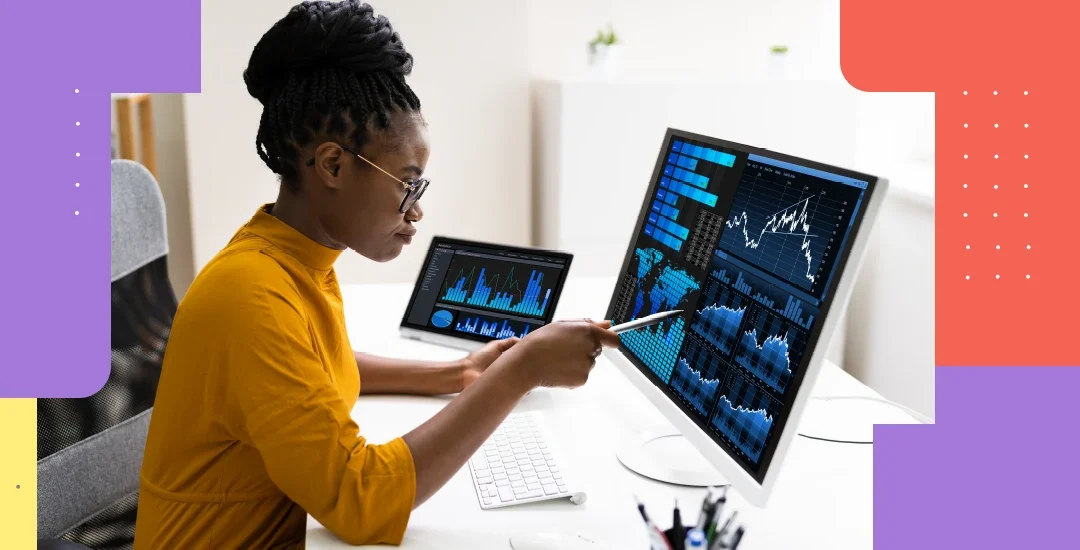
4 Ways Corporate Accounting Has Changed (and Stayed the Same) in 40 Years
Technological advancements have enabled accountants to interpret data more efficiently and effectively throughout the years. Corporate accounting today has its share of challenges, but looking back 30 or 40 years ago, things were much more difficult.
To illustrate these differences, here are a few ways corporate accounting used to look much different than it does today.
1. Accuracy and Consistency
The process of identifying, measuring, and communicating financial information used to be entirely manual, meaning accountants had to spend an extensive amount of time verifying that information was accurate and consistent.
“It was tedious to do everything by hand,” explains Cal Bruner, CFO of Caseware International. He recalls an experience where he sat with his receptionist for hours through the night reading each document back and forth to ensure accuracy.
It wasn’t until the end of the 20th century when firms began to adopt computers and accounting software, such as proto-spreadsheet tool Visicalc and the now-ubiquitous Microsoft Excel. The introduction of these technologies eliminated the need for calculators, ledgers, and paper-based systems. More importantly, it made accounting less tedious and improved its overall accuracy.
2. Efficiency and Consolidation
Aggregating numbers, gathering information, and consolidating information used to be a lengthy and manual process. Bruner recounts what this pen-and-paper approach looked like for him: “You’d have to go back and compare, ‘do the notes agree to the financial statements?’ We’d have some very detailed analysis to go through to ensure that our statements were, from start to finish, consistent.”
Documents were vulnerable to a lot of human error. With multiple people editing a file at once, a mistake could be made easily and is difficult to track and correct as it moves along.
With applications such as Caseware Working Papers, corporate accountants can automatically organize documents and process data with improved efficiency. When corporate data is entered into these systems, information is automatically consolidated, analyzed, and stored on the computer or cloud.
3. Data Security and Integrity
Keeping physical files safe and secure can be risky when you have many people coming in and out of an office building, and having robust office security can be expensive to maintain. Modern accounting technology, such as cloud computing, has provided a more secure way for firms to conduct business, and our capabilities for data security today are orders of magnitude greater than back then. Even so, data security and hacking is still a major concern for businesses today.
Cloud computing allows firms to permanently store data and use business applications over a remote server. Since data is kept on-premise and within large data centres that are shared by many other users, computer crimes such as identity theft, email phishing, hacking, viruses, and scams are threats to any use of information technology.
In spite of all of these security protections that can be used today, many companies still rely on basic spreadsheet programs that are susceptible to the same risks. No system is completely secure, but there are steps companies can take to minimize attacks, such as investing in a robust security network and accounting software such as Caseware’s to keep information safe and reduce the possibility of a data breach.
4. Workplace Culture
Employees of accounting departments have been accustomed to working long hours in the office. “Remote work” as we know it today wasn’t achievable.
That has drastically changed, and especially within the past year as organizations have been forced to develop remote work capabilities as a result of a global pandemic. Now office spaces are becoming obsolete and the way we communicate and collaborate on work has changed, notably with the use of video-conferencing platforms and cloud accounting software.
Even after the pandemic ends, many people believe there is no going back, reasoning that it is simply more convenient to use technology that eliminates overhead and gives employees the freedom to work whenever and wherever they’d like.
Old Habits Die Hard
It is important to remember that in spite of the widespread availability of accounting technology, many of the ‘old ways’ we’ve outlined here are still being used. Some organizations still utilize manual accounting systems and continue to use insecure spreadsheets to manage highly sensitive financial data, despite the opportunities for human error, data loss and security breaches. These routinely result in GDPR violations, large-scale loss of public records (such as COVID-19 data, as in this recent case) and massive financial impacts, such as when JP Morgan lost $6 billion from an Excel error.
Though some businesses still use the old ways, one thing that has stayed the same is accountants’ desire to provide value to their clients, whether it’s through keeping and interpreting financial records or acting as a business advisor. Developments in technology have created diverse opportunities for accountants to provide value, as the focus shifts towards the issue their clients care most about: how to protect and grow their business. As a result, firms should be ready to embrace these changes and stay up-to-date with technology in order to stay competitive and increase productivity.